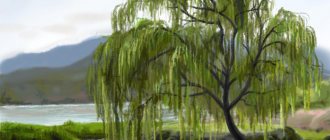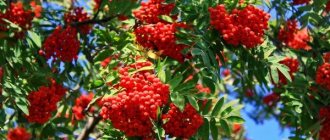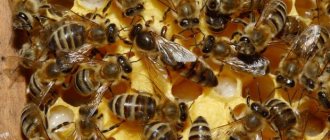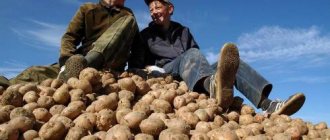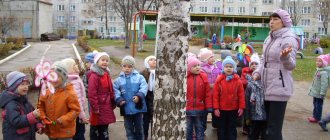Autumn is a wonderful time. At this time of year, the sun shines moderately, air humidity is at an optimal level, and it is not as stuffy as in summer. The days become short and the nights become long and cool. From mid-September to early October you can experience a unique phenomenon: Indian summer. Students can write a report on the world around them for grade 2, “Observations in the fall.”
Activities at this time of year
Summer residents collect apples, grapes, tomatoes, corn, pumpkins, potatoes, and carrots. Products are put into storage. When Indian summer arrives, gardeners prune trees and shrubs and also treat them against harmful insects. The soil is dug up and organic matter is added. In September-October, winter crops are planted and perennial plants are insulated.
Upon completion of agricultural work, a harvest festival is held. The gifts of autumn are laid out on the counters: fruits, vegetables, berries. Changes in nature that occur in autumn fill a person with positive emotions. Rain followed by sunshine is inspiring. Autumn is filled with romance. Marriages are often celebrated at this time of year.
Spring signs of spring in living and inanimate nature: list
Spring is associated with new life, because during this period the earth wakes up from winter hibernation, nature begins to bloom, the first still green petals and bunches appear. This is the most wonderful time, the sun is brighter and the sky is clear, and there is freshness in the air.
It is very easy to understand exactly when spring begins; there are a large number of phenomena and processes that characterize such a season, for example:
- The first green flowers appear
- Animals wake up from hibernation
- Bunnies, squirrels and foxes again change the color of their coats, so they camouflage themselves with their environment. Many animals begin to shed
- Buds appear, and from them - flowers
- You can hear the singing of birds returning from warmer climes
- Spring is the time for the birth of a new generation in animals
- Birds begin to build nests
In spring everything comes to life
From inanimate nature:
- The first is the melting of snow
- Streams begin to gurgle
- In winter there are practically no thunderstorms, but in spring you can encounter such a phenomenon
- Ice drift - this phenomenon occurs because the ice begins to melt and smoothly moves along the rivers
If you watch what people do, you can also see changes. Spring is considered the time of cleaning, because after winter it is worth cleaning your home. Also, preparations are underway to plant a vegetable garden, especially if a person lives in a rural area.
What happens to plants
The weather is changeable, but you can observe a colorful natural phenomenon - leaf fall. In autumn, plants shed their leaves. This process is useful for them, since the foliage helps the vegetation get rid of harmful insects. But a certain number of larvae still remain under the bark.
Shrubs and grasses shed their leaves. This is due to the fact that in autumn the amount of harmful substances in it increases. By shedding leaves, plants get rid of them. Useful components are stored in the roots and tubers of the bulbs. Valuable substances become necessary in the warm season.
In autumn, plants prepare for winter. After a period of dormancy, they tolerate the growing season better. Grasses, trees and shrubs do not stop developing, but their metabolism slows down. In late autumn, the makings of vegetative buds appear, which bloom in the spring.
Plants require moisture and sunlight for photosynthesis. When there is a shortage, biological changes occur at the cellular level: vital processes stop or slow down.
In autumn there are temperature fluctuations. Due to the reduction in daylight hours, the movement of fluid in plants slows down. The sun does not fully warm the earth, the soil dries out. The life cycles of trees and shrubs are completed. In winter, plants have a dormant period, which is associated with a lack of moisture and nutrients.
One of the main signs of autumn is the change in leaf color. They turn yellow, golden, red-orange, and soon fall off. Students are encouraged to make a list of trees that shed their leaves first, these are:
- birch;
- maple;
- Linden;
- oak;
- ash;
- poplar;
- aspen.
Plants lose leaves because they are deficient in chlorophyll, a green pigment that is involved in photosynthesis. The foliage decomposes on the soil surface, saturating it with organic matter. The resulting layer is able to retain rainwater, it saturates the soil with moisture. In such a substrate, crops grow and develop better, and in cold weather their roots are protected from freezing.
Autumn is a time of beautiful landscapes. You can see how all nature is preparing for winter. In a scientific diary for grade 2 on the surrounding world, it is necessary to indicate that in the fall both solid and liquid precipitation are observed. The climate changes sharply, at the end of November fogs appear and frost forms on the plants.
At this time, the winds blow, the clouds fill with rain. Many people associate autumn with mud, slush, and chilly winds. At the end of November, snow dew appears early in the morning.
Winter signs of winter in living and inanimate nature: list
In anticipation of the New Year, many children know that the luxurious time of year has arrived - winter. Gifts, holidays and Father Frost and the Snow Maiden are not all indicators that winter has come. Of course, it comes a month earlier - December 1st. This is a fabulous time when you can play in the snow and sculpt a Snow Woman, we see stunning drawings on the windows, and there is beautiful snowy weather outside.
In anticipation of the onset of winter, we are all waiting for a fairy tale, wish fulfillment and magic. This is how we associate cold winter. But these are not all the indicators by which one can determine the onset of such a wonderful period:
- Firstly, everyone dresses warmly enough. A down jacket or fur coat is used as outerwear; people wear warm gloves and hats, and in very “severe” weather - huge scarves and thermal underwear. It is very important to dress as warmly as possible in such cold weather, because you can easily catch a cold and miss the entire winter holidays
- Snowfall is also the main characteristic of the winter period.
- The winter sky is quite heavy and seems to hang right above your head. There is moisture and frosty freshness in the air
- Ice. Walking or driving in winter is very dangerous; for convenience, many people wear snowshoes, and their cars are “changed” to winter tires. After all, it’s very easy to slip, and worse, to injure your leg or arm.

winter snowstorm
- If a strong wind blows and snow falls, it becomes a blizzard. It’s very exciting to watch such weather from the window, but if you get caught in a strong wind with snow, it’s quite unpleasant
- As children, we all really loved icicles. And this is another sign of winter. In other words, an icicle is a cone-shaped piece of ice that can most often be found on roofs or trees.
- Animals, birds and insects, unfortunately, can be found very rarely, because birds fly away to warmer climes, animals hibernate, and insects hide from the severe frosts that are typical for winter
- Days are much shorter than nights
Despite the cold temperatures and snowstorms, winter is a wonderful time; many games can only be played thanks to the snow that only falls in winter. Skiing, sledding, snowboarding, playing snowballs or sculpting various figures out of snow - these are very exciting and educational activities that are possible only in winter. Therefore, the winter holidays should not be spent sitting in front of a computer monitor, but rather have a great free time with friends or family.
Changes in the animal world
Natural phenomena that occur in autumn force the animal world to adapt to other conditions. Birds migrate to warm countries, but some, such as pigeons, remain in cities and villages. They do well in winter in such conditions. The first to fly away are:
- swallows;
- starlings;
- nightingales;
- rooks.
Before making the flight, they gather in flocks. Birds sense climate change. As soon as it starts to get cold, they hit the road. The flight differs in duration and speed: the average duration is 2 months, speed is 30 km per day.
Birds migrate at different times of the day: morning, afternoon, night. While moving, the bird stops to get food. Birds need to accumulate a subcutaneous layer. Thanks to him, it will be possible to withstand temperature changes. The following people also lead a nomadic lifestyle:
- woodpeckers;
- bullfinches;
- owls;
- jays.
They live in forests and feed on fruit remains. List of birds that tolerate cold well:
- tits;
- sparrows;
- magpies;
- pigeons
In the cold season they get their own food. Insects - beetles, mosquitoes, flies, butterflies, grasshoppers, dragonflies, ants - hide from the cold under tree bark or live near the roots. They create homes in tree cracks and also hide in moss.
With the onset of late autumn, cold-blooded animals change their body temperature. They differ from warm-blooded species in their undeveloped thermoregulation system. Cold-blooded ones include:
- amphibians;
- reptiles;
- frogs;
- lizards;
- snakes.
In mid-November, the frog, the smallest representative of amphibians, hides in secluded places. Many animals hibernate. When they see that the cold weather is approaching, they begin to feed heavily. Predators eat a lot of food and gain weight. Some stock up on food, put mushrooms, seeds, fruits, and insect larvae in shelters.
In autumn, mammals molt; some species, in particular deer, lynx, and wolves, change the shade of their fur. In summer it gets darker, and in winter it gets lighter. The undercoat intensifies in the cold season, it becomes denser and lengthens. Thanks to this, the animal warms up well in winter.
In autumn, living organisms are transformed and modified. Hedgehogs, rodents, chipmunks, and brown bears hibernate. They must accumulate fat. Elk, wild boar and lynx begin their mating season in the fall. Animals breed.
Badgers, brown bears, chipmunks, and hedgehogs feed heavily and then hibernate. The fat layer helps keep you warm during cold periods. Moose, wild boars, bears and lynxes are entering their mating season. They breed in the spring.
Objects and phenomena of living and inanimate nature in winter: description of observations
Nature is everything that surrounds us and is created by human hands. Conditionally, nature can be divided into living and nonliving. The first group includes plants, animals, fungi, humans, and microbes. But to inanimate nature: the sun, air, stars, soil, precipitation, etc.
In winter, summer, autumn and spring, all phenomena change smoothly, and this is how we can determine the seasons of the year. Winter is the coldest time of the year, but this is also the most beautiful time. In winter, the season of fun snowball fights opens, children ride on slides and sleds, make a snow woman, and most importantly, everyone is looking forward to a fabulous New Year. This time can be determined by the following signs:
- Snow is more often observed in the form of precipitation. Snowflakes fall to the ground either independently or in flakes. And also only in winter you can see snowfall - this is heavy snowfall
- Blizzard and blizzard
- Ice. Of course, all kids love to skate, but this activity is quite dangerous, so you can only play on the ice if accompanied by adults
- Icicles can be found on the roofs of houses and tree branches. Therefore, you need to be careful, and it is better not to walk under houses, because if the temperature gets higher, the icicle can easily melt and fall
- Santa Claus decorates the windows with beautiful patterns
- All rivers and lakes are covered with a thick layer of ice, which is called freeze-up

The following changes can be found in living nature:
- Many animals change their color, such as the hare, squirrel and fox
- Bears and hedgehogs hibernate
- Bullfinches and tits arrive and replace the bulk of the birds
- People dress in warm clothes
When the snow begins to melt and the patterns on the windows disappear, the sun begins to warm up, and the days become longer - then winter begins to gradually transition into another season - spring. What other signs of the spring season there are are described in the next paragraph.
Summer signs of summer in living and inanimate nature: list
Of course, all children know when summer begins, because... After a hard school year, the long-awaited summer holidays are coming. That is why summer is the most favorite time of the year. Many go to visit their grandmothers or to a resort with their parents. The sea, the beach and a lot of fun await every child. But this is not the only indicator that summer has come; there are also such changes in living and inanimate nature, for example:
- Weather. The wind is dry, the temperature is high, so even the nights in summer are quite warm. But if the day is very hot and the sky is clear as a tear, at one moment it can start raining with a thunderstorm, after which you can often see a rainbow
- In the morning you can find dew on the leaves and grass
- Winds can be strong with variable gusts and frequent changes of direction

Hot days of summer are diluted by rainy weather, and summer rain is divided into several types:
- Ordinary
- Short term. It is also called blind or mushroom, accompanied by sunny weather
- Shower. It starts suddenly. A large amount of water falls out in a very short time. Accompanied by wind and thunder
- City-shaped. Along with the water droplets, hail particles also fall out. They flow powerfully and quickly, which consequently negatively affects agriculture
- The grass is bright green
- In summer, berries and fruits ripen, flowers bloom
- Already at the beginning of summer you can collect mushrooms after the rain
In summer, people dress quite lightly, wear sunglasses and hats to protect them from the hot rays of the sun. In agriculture, summer is a very important period; agronomists and landowners are cultivating the soil, looking after their gardens, picking berries and preserving them for the winter.
Objects and phenomena of living and inanimate nature in spring: description of observations
After a cold winter, everyone is looking forward to warmer days. Literally from the very first days of spring, the sun's rays begin to warm up, and at the same time flowers appear, the grass turns green, the trees bloom, and the birds begin to sing. In other words, the Earth comes to life again and wakes up.
- The first sign is the snow is melting. The icicles are melting and the beautiful patterns on the windows are gradually disappearing.
- The day is getting longer.
- If in winter there are often leaden clouds, and the sky is gray and dull, then in spring the sky becomes lighter, the clouds disperse and the sky becomes clean and clear.
- Plants also react to the arrival of spring and demonstrate this by the appearance of green leaves, buds, spruce and alder blooming young cones. Flowers gradually bloom, bees and other insects appear.

Nature comes alive in spring
- Spring is also associated with the fluffy “seals” of the willow tree; they are carried to church on Palm Sunday. Also, one of the most important spring holidays is March 8th. This is International Women's Day, and flowers such as tulips are considered a symbol.
- The birds are flying home again, and this can be heard from the beautiful singing. Swallows begin to build nests and have offspring.
- Animals change their warm clothes to lighter ones. At the same time, the color of the coat itself.
- People also change their wardrobe, hiding fur coats, warm hats and boots until next winter.
Vienna also has more exciting activities, for example, closer to the May holidays, many go fishing, pick mushrooms, start grilling kebabs and relax a lot in nature, enjoying the beautiful nature.
Objects and phenomena of living and inanimate nature in summer: description of observations
Using the textbook “The World Around us,” children starting from the second grade can become familiar with various anomalies and changes in the environment. All these changes change smoothly along with the seasons of the year, which is why they are often called seasonal.
The main objects and phenomena that can be encountered in the summer are:
- Hot weather
- Strong gusts of warm wind
- Rains, after which you can collect mushrooms
- Thunder is a sound phenomenon that is often accompanied by lightning
- hail
- After the rain a rainbow appears
- In the morning you can observe such a phenomenon as dew.
- The plants are dressed in green petals, there is a scent of flowers, and the fruits are ripening
- You can hear birds singing, bees buzzing and crickets ringing
- The day is longer than the night and you can watch the beautiful stars through the clear and clear sky.
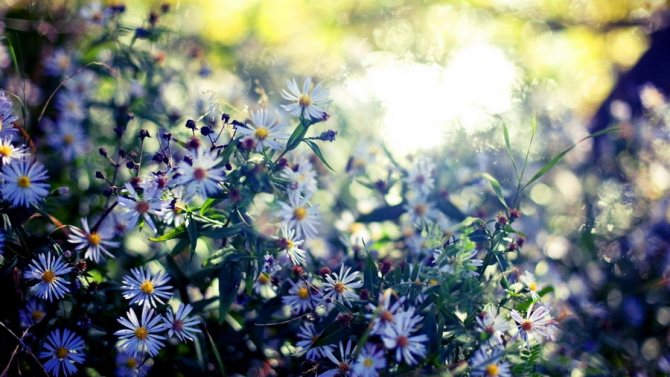
Each season of the year is unique and beautiful in its own way:
- In autumn, all nature, plants, animals and people prepare for the cold. Trees turn yellow and shed their leaves, animals make provisions for the winter, change color, and some are preparing for hibernation. Birds fly to warmer climes, and insects hide. People take out warm clothes and umbrellas, collect ripe fruits and wait for frost.
- Winter is the time for snow-white fairy tales and fun games in the snow. The entire surface of the earth is covered with a thick layer of snow and ice. With the beginning of winter, children and adults are looking forward to the New Year holidays.
- In spring, the earth wakes up from its winter sleep, everything around blossoms, and a fresh aroma soars in the air. Birds return, animals also change their coats and crawl out of their burrows and continue their offspring. You can already find insects, birds and midges. And people are slowly planting vegetable gardens and orchards and preparing for the hot summer.
- Summer is my favorite time of year, because... The long-awaited vacation begins. Finally, you can enjoy warm days, soak up the sun and swim in the sea. Already at the beginning of summer you can savor delicious berries and fruits. In the summer you can pick mushrooms, go to the forest to pick flowers and relax in the fresh air.
